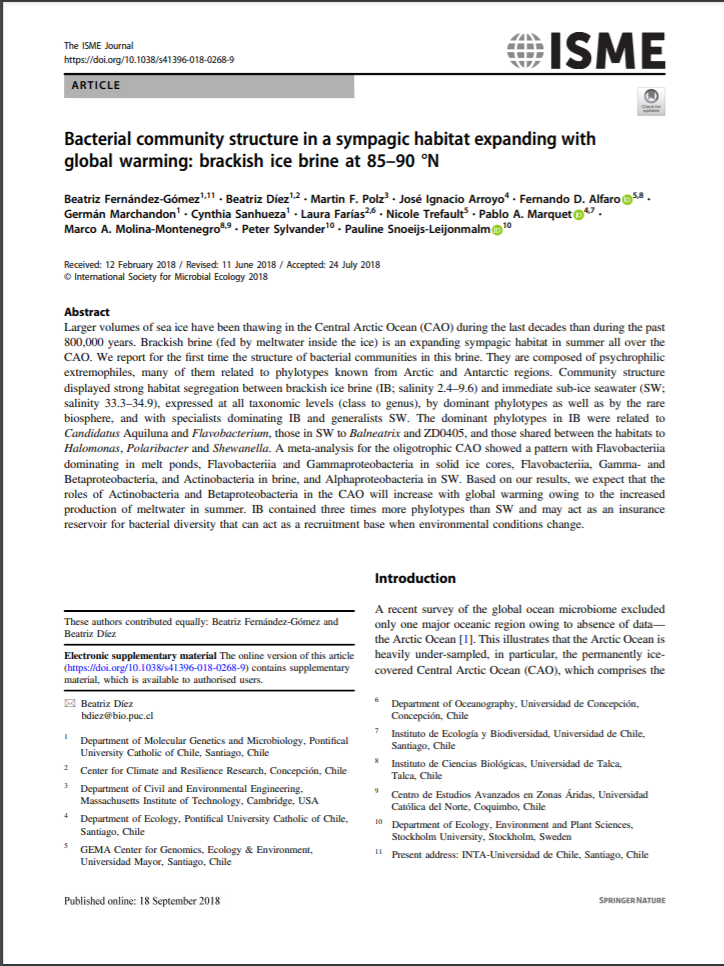Bacterial community structure in a sympagic habitat expanding with global warming: brackish ice brine at 85-90 degrees N

Fecha
2019Autor
Trefault, Nicole [Univ Mayor, GEMA Ctr Genom Ecol & Environm, Santiago, Chile]
Alfaro, Fernando D. [Univ Mayor, GEMA Ctr Genom Ecol & Environm, Santiago, Chile]
Fernández-Gómez, Beatriz; Diez, Beatriz; Polz, Martin F.; Ignacio Arroyo, Jose; Marchandon, German; Sanhueza, Cynthia; Farias, Laura; Marquet, Pablo A.; Molina-Montenegro, Marco A.; Sylvander, Peter; Snoeijs-Leijonmalm, Pauline
Ubicación geográfica
Notas
HERRAMIENTAS
Acceda a títulos restringidos
¿Cómo descargar?Resumen
Larger volumes of sea ice have been thawing in the Central Arctic Ocean (CAO) during the last decades than during the past 800,000 years. Brackish brine (fed by meltwater inside the ice) is an expanding sympagic habitat in summer all over the CAO. We report for the first time the structure of bacterial communities in this brine. They are composed of psychrophilic extremophiles, many of them related to phylotypes known from Arctic and Antarctic regions. Community structure displayed strong habitat segregation between brackish ice brine (IB; salinity 2.4-9.6) and immediate sub-ice seawater (SW; salinity 33.3-34.9), expressed at all taxonomic levels (class to genus), by dominant phylotypes as well as by the rare biosphere, and with specialists dominating IB and generalists SW. The dominant phylotypes in IB were related to Candidatus Aquiluna and Flavobacterium, those in SW to Balneatrix and ZD0405, and those shared between the habitats to Halomonas, Polaribacter and Shewanella. A meta-analysis for the oligotrophic CAO showed a pattern with Flavobacteriia dominating in melt ponds, Flavobacteriia and Gammaproteobacteria in solid ice cores, Flavobacteriia, Gamma- and Betaproteobacteria, and Actinobacteria in brine, and Alphaproteobacteria in SW. Based on our results, we expect that the roles of Actinobacteria and Betaproteobacteria in the CAO will increase with global warming owing to the increased production of meltwater in summer. IB contained three times more phylotypes than SW and may act as an insurance reservoir for bacterial diversity that can act as a recruitment base when environmental conditions change.
URI
https://doi.org/10.1038/s41396-018-0268-9http://repositorio.umayor.cl/xmlui/handle/sibum/6358
https://www.nature.com/articles/s41396-018-0268-9
Coleccion/es a la/s que pertenece:
Si usted es autor(a) de este documento y NO desea que su publicación tenga acceso público en este repositorio, por favor complete el formulario aquí.